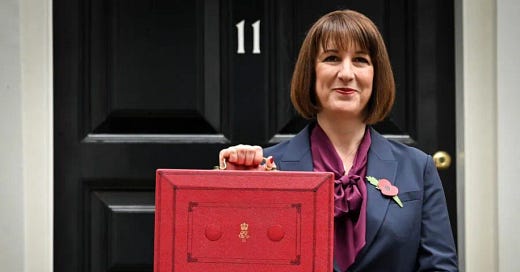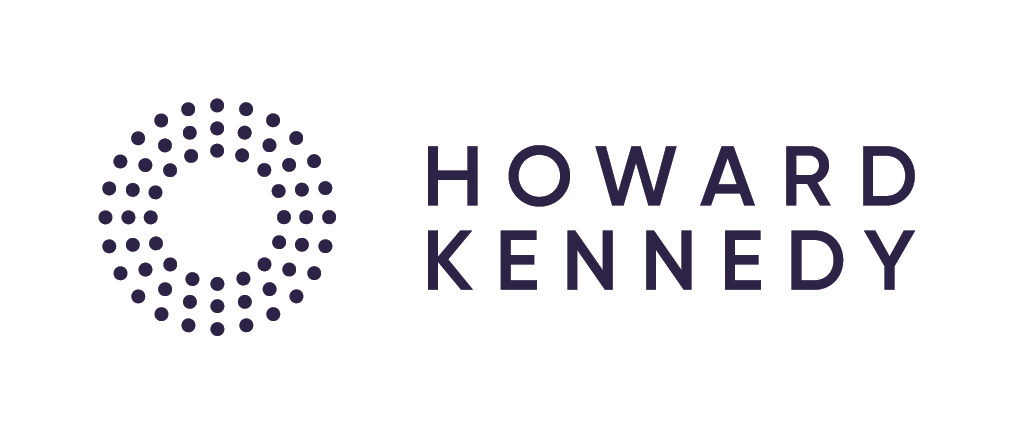Your inbox is, I suspect, awash with budget reaction takes - but for anyone running a business in the UK, the really important question is how best to lead that business in the new economic environment in which we find ourselves.
In last week’s Moving Tribes post, I laid out some of the principles I’d like to see applied in the budget in order to support the government’s aim of generating economic growth by encouraging businesses to invest and expand:
Those of you who read the post closely will remember that I outlined things that would be on my budget ‘bingo-card’ for a business-friendly budget and will note that very few of them actually made it into the speech yesterday.
The big story of this budget is obviously the huge increase in public expenditure and the much needed programme of capital investment in our crumbling public services.
Few would deny that such investment is needed, and even from the perspective of a business owner it was important for the government to fix the UK before it fell apart altogether - you can’t run a successful business in a country with a failing health service, crumbling schools and broken transport infrastructure.
The disappointment yesterday, then, was less about the investment push, and more about the choices the Chancellor made about how to pay for it. The large bulk of the tax rises announced comes from changes to Employer’s National Insurance, which surely must be a brake on growth.
Adding in the other announcements in the budget, retail and hospitality businesses who collectively employ millions of people in the UK and are a massive part of the economy have seen:
A big rise in NI payments (both from the rate increase and most starkly from the reduced thresholds)
A further rise in the National Living Wage, which is now over 28% higher than it was as recently as March 2023
A rise in Business Rates if they are small enough to benefit from the current rebates
Plus any increases in cost that come from the proposed changes to employment regulations
Altogether a hefty bill to pay (over £2.5bn just for retailers, according to the BRC). And all of it representing cost increases which you pay before you’ve taken a penny of revenue.
As business owners, though, we have no choice but to play the hand we are dealt. As last week’s post concluded, the only thing you can do is control the things you can control. So how will businesses cope with the new and higher cost world that 2025 will bring? Here are 4 broad buckets of action you should consider:
1) Cost reduction
An obvious response to some costs going up will be to consider how others can come down. The Office for Budget Responsibility, for example, considers that the main impact of the rise in NI will be that companies hold back on wage settlements, effectively passing the cost on to their employees.
These cost reductions will need to be pretty big, too. For many sizeable retailers, the impact just of the NI changes alone will be many millions of pounds of cost increase - often representing a big proportion of their current profits.
Squeezing wages is harder, of course, for retail and hospitality businesses for whom a big part of the wage bill is paid at National Living Wage, which can’t go down. It is also, for many of the best businesses who really value their colleagues, something they would dearly like to avoid.
Inevitably, then, there will be pressure on other costs - much like the period of high inflation a few years ago, businesses will look to see if they can squeeze suppliers, hollow out services or reduce costs in some other way. Even within the wage bill, businesses who can’t reduce their hourly wage rates can still look at the number of people they employ and consider if they can do ‘more with fewer people’.
But of course, having just been through that period of high inflation, many will find that there is little left ‘in the tank’ for further cost reductions.
2) Price increases
Mathematically, the alternative to cost reductions is to put prices up. The OBR forecasts that some of the impact of the NI rises will indeed be to increase inflation and I suspect that in retail and hospitality sectors where cost increases are hard to mitigate this will be disproportionately true.
Ironically, we’ve all just lived through a period of high inflation when managing pricing pressures suddenly became a core competence, and so I suspect much of that experience will be being dusted off again. Whatever combination of direct price increases, ‘stealth’ increases, shrinkflation and other tactics worked best last time, I would not be surprised to see more of it in 2025.
The big question, of course, is whether you can land those kind of price changes and make them stick. I think that will vary greatly from sector to sector. Oddly enough, those businesses whose customers themselves earn the National Living Wage or whose customers are disproportionately working for the public sector will probably find that easier as those customers benefit from their own pay rises. It will be businesses whose customers are in the ‘squeezed middle’ who might find it harder to pull the pricing lever.
3) Selling more
The positive side to all that price increase talk, of course, is that if you can sell more to each customer and increase the size of your typical sale then you can also use that increased margin to offset your higher costs.
More than ever, then, the winning businesses will be those who can add ‘just a little more’ to each sale with clever promotional strategies and enthusiastic and well-trained colleagues.
4) Going for growth
For any individual business, of course, there is always the opportunity to make your finances look better by growing at your competitor’s expense, and the wave of cost increases coming in 2025 will make that ever more true.
As a practical measure, as I’ve written about before here at Moving Tribes, now is the time to make sure you have a clear view of market share and are managing your battle with your competitors closely.
So what happens next?
For all of these reasons, I forecast we’ll see a widening gap between the winners and the losers in each retail sector - both adding to your basket and gaining sales from your competitor, for example, are hallmarks of strong retailers with effective store and online operations.
Although there will inevitably be some painful decisions that individual retailers make about cost controls in the light of these very significant new cost-pressures from the government, it will likely be those who manage to ‘trade their way out of trouble’ who survive best.
From the Government’s point of view, this set of cost increases passed on to businesses was probably ill-advised, and there is no question that we will see higher inflation, less business expansion and less employment as a direct result.
As an individual business owner, however, there is not much you can do about that - control what you can control, fight the battle with your competitors and make sure that it is not your business that falls - that’s the renewed challenge that 2025 brings for all of us.
P.S.
Moving Tribes is kept free for you to read and share thanks to generous support from partners. I’m delighted to be working with the excellent team at Howard Kennedy for this series of posts - they are a full-service legal team with a lot of experience of the kinds of issues consumer businesses often face, so do look them up if you need to.






